An Exclusive Interview With CHARLES PETERSON
By Catalin CROITORU
NIRVANA AND THE GRUNGE SCENE
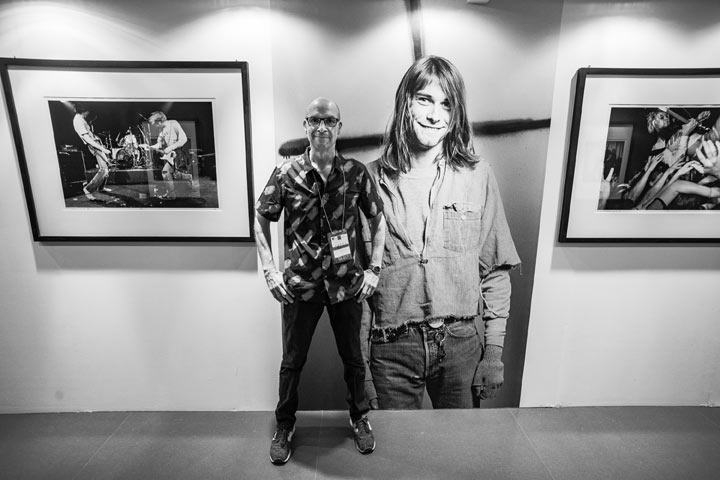
Cata CROITORU: Hello, Charles!
Thank you for this exciting interview. You are one of the most famous music scene photographers in the world, mostly for capturing the then-newly emerging grunge scene. Among your iconic images, we can find intimate photos of Kurt Cobain of Nirvana, Pearl Jam, and Soundgarden. Your career in photography began in the mid-80s. You are well-known for your work with the Seattle-based independent record label, Sub Pop, your images were exhibited in museums and galleries around the world, and your images are being featured in several prominent publications. This is such an impressive career! I’m sure Lens’ readers would like to know how it all began.
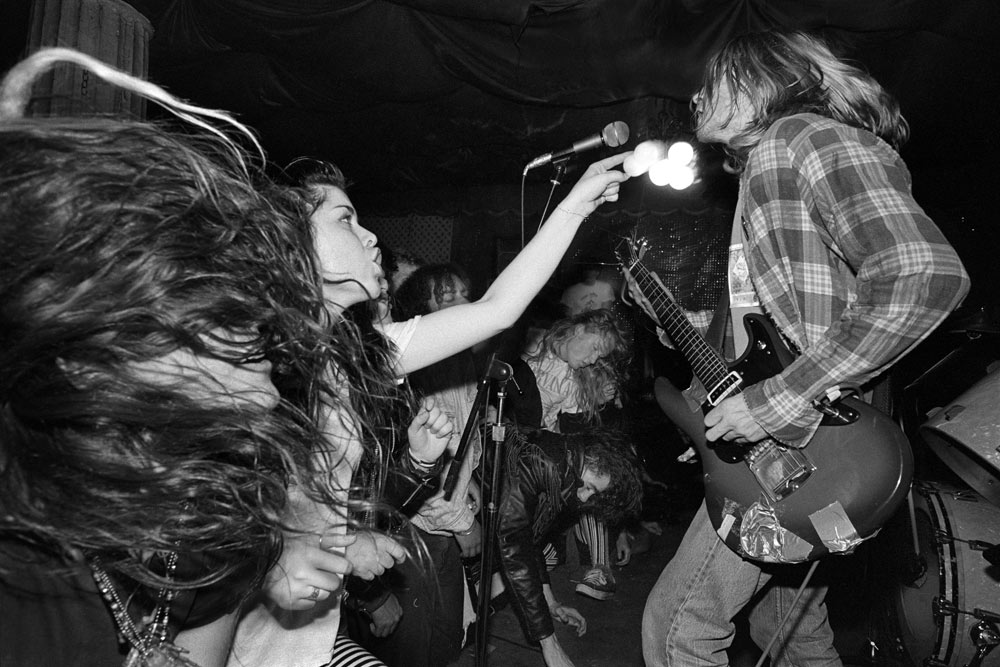
Copyrights to Charles Peterson © All rights reserved.
Charles Peterson: Thanks Cata. Many of the core musicians of the grunge scene and I met while in college. I went to the University of Washington, in the neighborhood known as the U-District, where many of us lived, whether attending college or not. It was populated with inexpensive old homes, perfect for parties, practice, and living cheaply. I had grown up in the suburbs of Seattle, Bothell, had developed an early interest in photography, and planned on pursuing it with an art degree in college. But I also had an early interest in music such as the punk scene, and so gravitated to others like myself. The first person I met was Mark Arm, later singer in Green River and Mudhoney, who was living in the same dormitory as me on campus in the fall of 1982. We became friends and rented an apartment off-campus a couple of years and a half later. He would introduce me to Bruce Pavitt (Sub Pop), who would introduce me to Kim Thayil (Soundgarden), and so it went.
C.C.: So were you shooting musicians and bands because you were attracted to their music, or because of the lifestyle you had at the time?
C.P.: Actually, in my bedroom in the suburbs, growing up, it was the London punk scene that looked so glamorous and alien to me, and I wanted to something like THAT! But once I was actually living that lifestyle, I most certainly did it more for the love of the music, because the lifestyle isn’t all it’s cracked up to be. In particular, the fantastic live shows these bands put on attracted me. I wish I had been more aware of the fact that it was essential to take more photos of the day to day, though. I think understanding that comes with maturity.
C.C.: By the beginning of the 90s, Nirvana became a worldwide symbol in the music industry. MTV was broadcasting their clips non-stop; the young generation was humming their songs. What drew you to get a closer look at Nirvana and its leader, Kurt Cobain?
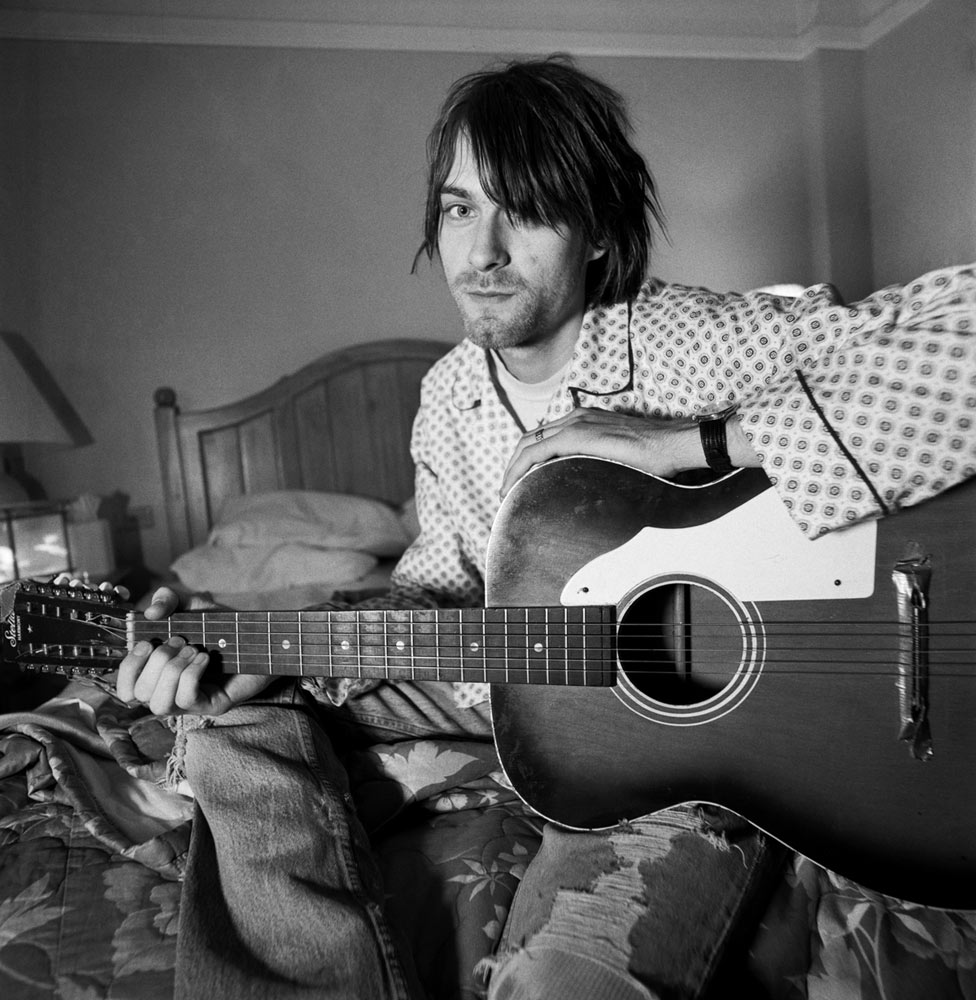
Copyrights to Charles Peterson © All rights reserved.
C.P.: Well, Kurt knew who I was before anyone in the larger world knew about him. The Sub Pop thing had been chugging along for a couple of years by the time Nirvana came up from Aberdeen and took the scene by storm. He was well aware of Soundgarden, Mudhoney, etc. He’d seen the photos I’d been making and, in his diaries, wished the same treatment for his band. So they were just new pieces to the puzzle. In retrospect, I wish I’d taken a lot more photos of them than of some other bands.
C.C.: Do you remember what it was like when you first got in touch with the members of Nirvana? What was it like to be involved in their lives?
C.P.: It was an assignment from Bruce Pavitt at Sub Pop, where I worked as the house photographer.
My girlfriend and I took the ferry over to Bainbridge Island in May of 1989, and we ended up at an abandoned fort (Fort Worden), a grassy field where I was taking some group photos of Nirvana. Kurt was quite shy, Krist gregarious, and the drummer a hippy. Pretty much what you’ve read about them.
I had already photographed them once and was blown away. But nobody, except them, could ever imagine much beyond touring in a crappy van and sleeping on the floor.
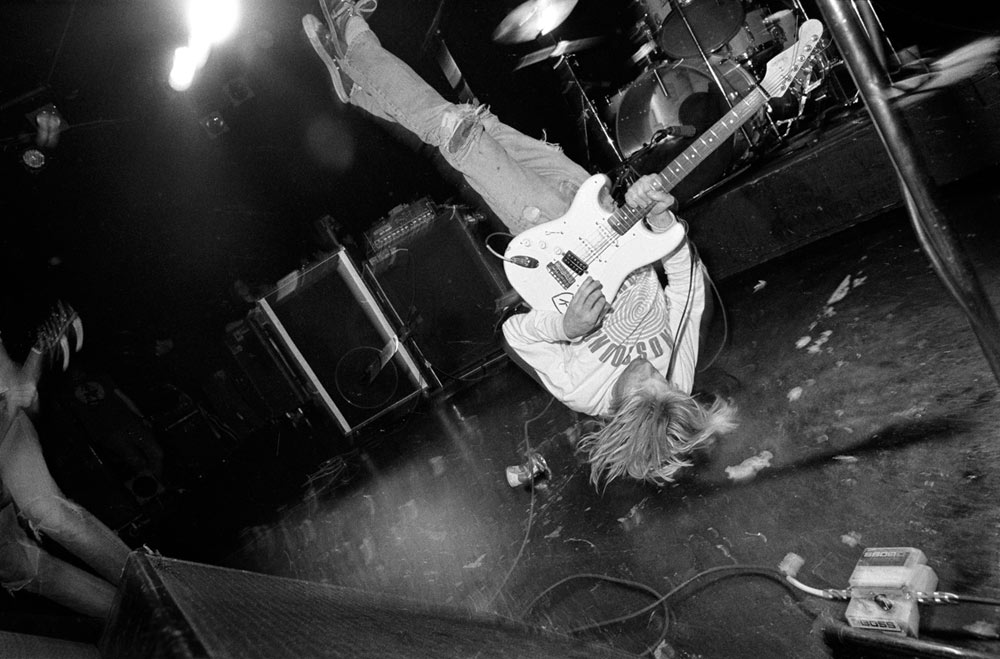
Copyrights to Charles Peterson © All rights reserved.
C.C.: You have taken photos of Kurt Cobain many times; on-stage and off-stage, in candid portraits, and so on. How was he in front of the camera? Did he feel comfortable?
C.P.: Kurt and I were both introverts to a degree, me more than him, I think.
Being an introvert is NOT a good trait for a people-photographer to have, but I think I overcame it when the bands came on stage and did their thing.
One of Kurt’s passions or hobbies, if you will, was photography, and so he liked photographers and gave them lots of leeway. I always felt a little awkward around him – somewhat how two magnets repel. So I never felt I got the best pictures of him off-stage.
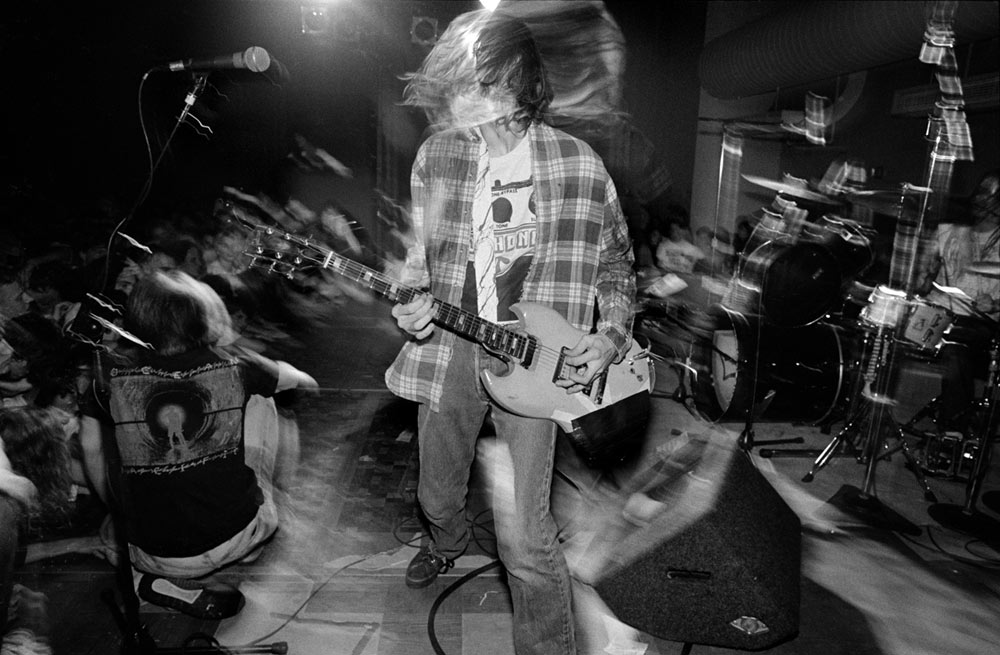
Copyrights to Charles Peterson © All rights reserved.
C.C.: And then, in 1994, the thunderstruck: Kurt Cobain died. Do you remember what you were doing that day? What was your first reaction when you have heard the news? How did that event affect you as a friend of him and of Nirvana, and as a photographer?
C.P.: I was awoken with the news by the photo editor of The Rolling Stones – on a call waiting was Entertainment Weekly. I stumbled out of my run-down apartment and off downtown to my darkroom/studio where I pretty much lived for the next three days. I figured Kurt would have wanted to be remembered by my photography, and it was also a way to put off the emotional shock of it, all by working.
And in a way, it’s been the watershed point of my career, up to this very second as I write this. There seems to be no end in the interest in Cobain, grunge, and in work, I did at the time.
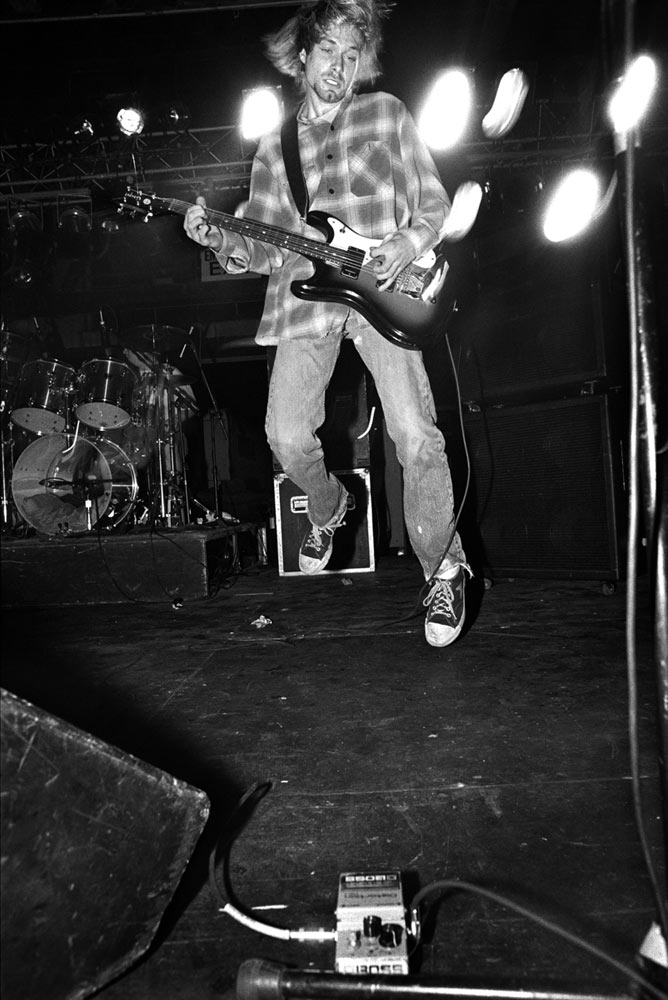
Copyrights to Charles Peterson ©
All rights reserved.
C.C.: Tell us about the other bands you worked with.
C.P.: I was close friends with Mudhoney, Soundgarden, and TAD, and many more obscure bands in the scene. Pearl Jam has given me more access than just about anybody. Nirvana, especially once they became famous, was a bit difficult band to nail down. In a lot of ways, it was because Kurt was so easy to photograph that I made such iconic images of him, not because I shot him so much. I always prefer to keep Nirvana in the context of the whole scene at the time. And like a lot of young photographers, I was shooting anything and everything to make money, and being based in Seattle wasn’t always necessarily about the famous, or even the music.
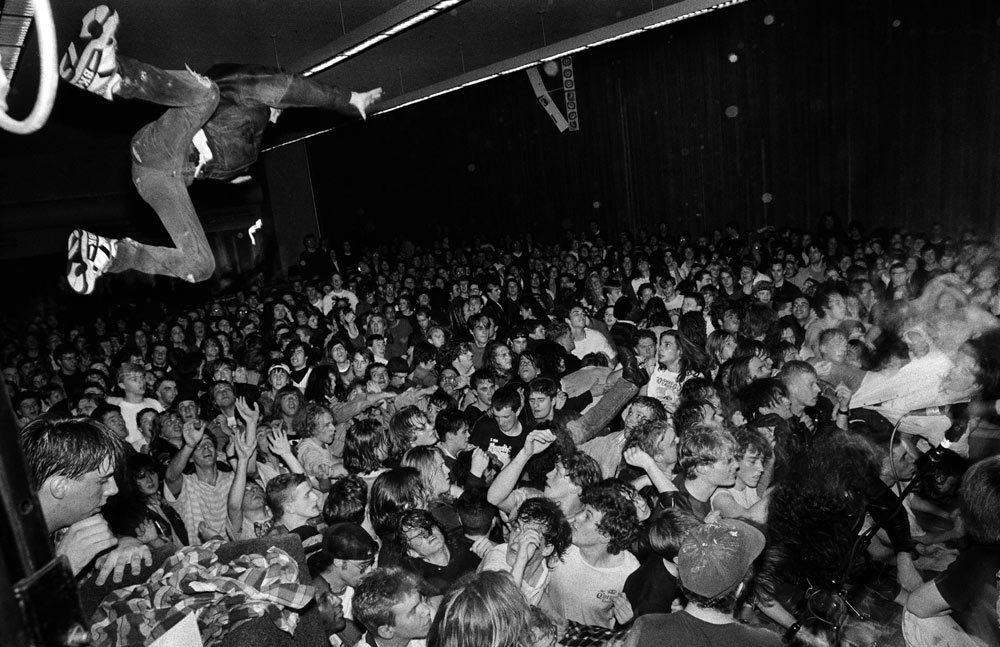
Copyrights to Charles Peterson ©
All rights reserved.
C.C.: Are you still in the young music bands’ scene? Tell us about your latest projects with grunge bands.
C.P.: I have worked with YUNGBLUD out of the U.K. He’s this crazy twenty-year-old who wanted to work with me because of my grunge reputation. Shabazz Palaces has been another fun group to work with. Otherwise, it’s been mostly the grunge revivals – such as Pearl Jam at the baseball stadiums last year and Mudhoney at the Sub Pop 30th Festival in front of 50,000 fans on the beach.
C.C.: In a wider context – at the moment, are there any exciting grunge bands that you are familiar with around?
C.P.: Some of the original bands are still at it. I don’t go out to clubs much anymore, but there’s still all types of music getting played. Punk, Hip Hop, you name it.
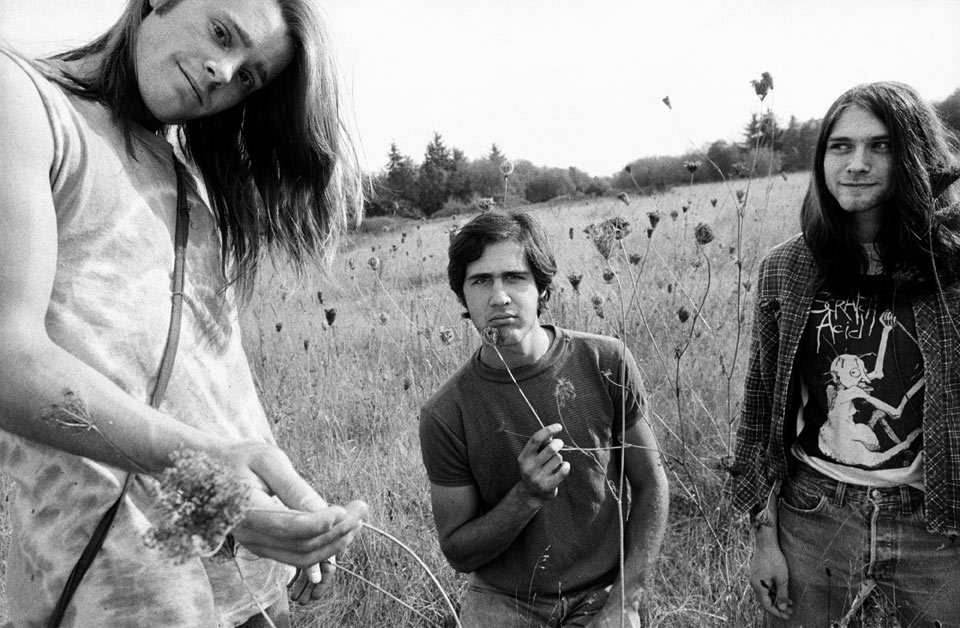
Copyrights to Charles Peterson © All rights reserved.
C.C.: As an old school photographer, attached to the film and the darkroom, how does it feel to expose your work on Instagram? You’ve started posting your work two years ago, and you are very active. What do you think about the changes and development of technology and of social media in the context of photography?
C.P.: Well, I’d been posting on Facebook for a number of years, but not sure why I started so late with Instagram. I personally find Instagram exhausting – just way too many images to look at, many of them mediocre. I also never really got the point of hashtags, so I pretty much forgot them. I guess I’m somewhat old school that way. It’s only recently that I’ve started to use my phone for more pictures as well (a Google Pixel XL). I guess I’m more old school in the sense that I feel people need to edit themselves more. The film and darkroom were a good gate – there was only so much one could do, so choose wisely.
C.C.: And speaking of “old school” – are you still using film when taking pictures? Or have you switched to Digital, or maybe Cellular, cameras?
C.P.: I haven’t taken a roll of film or stepped into a darkroom in about ten years. The darkroom was killing me, the film became too expensive, and the digital cameras became too good. I shoot primarily with a Leica M10 now, and it’s everything I could ask for. And my six-year-old daughter is named Leica. I do have an Imacon film scanner, and that’s been my bread and butter for the last fifteen years in allowing me to get my archives out there and make fine art prints.
C.C.: Thinking of all those years in the field, what is the most powerful image you took at a certain moment that pops-up to your mind right now? And what is the story behind it?
C.P.: The photograph that really defines the grunge generation is the stage diver at the Nirvana show, taken at the University of Washington HUB Ballroom in 1990. He climbed up onto the P.A. next to me, and I actually tugged at his pant leg from below and shouted, don’t do it. As he wasn’t heeding my advice, I shrugged and quickly set up for the shot. I love the fact that it’s become such an iconic, instantly recognizable shot, yet without the performer anywhere in it. It was taken with a Nikon FE2, 24mm lens, off-camera Vivitar 285 flash and Tri-X.
C.C.: After the grunge, and after Nirvana, when every image was processed and put in order – you dedicated your time to creating a family. You have two kids, a boy and a girl, and a wife that’s always on your side. How did you find this transition, from the loud, noisy music scene to a calm family life?
C.P.: Calm family life? You obviously don’t have kids! That said, it is a different type of insanity and one that has become a delight to photograph, though family photography is treading through a minefield of cliches, for sure. In my long term project of them, Child’s Play, I’ve been trying to find the abstract and universal. Just like with my music photography, it’s about moving beyond the mere representational and presenting a bigger, deeper story that can speak to anyone.
C.C.: Is it something that you always wanted to have done but had struggled with because of lack of time?
C.P.: Yes, lots. One thing I don’t talk about much is the fact that I’ve suffered from chronic pain my whole life – much of my time has been spent or wasted dealing with the headaches resulting from old compounded neck and shoulder injuries that were cascading into fibromyalgia. Fortunately, my family has given me the opportunity to approach healing myself almost as a full-time job these last few years (my wife is the key provider with her long-time tech job). And it’s working, but one has to be persistent. So, yes, there are some long term projects and travels I wish I’d done, one being a book on world music. Not world music on a WoPop stage, but in the back alleys of Marrakesh or Cuzco, the real raw deal. It could still happen, I suppose.
C.C.: Back in the old days, what gear did you use?
C.P.: Nikon SLR’s mostly, though also Hasselblad and then starting mid-nineties more and more Leica rangefinders.
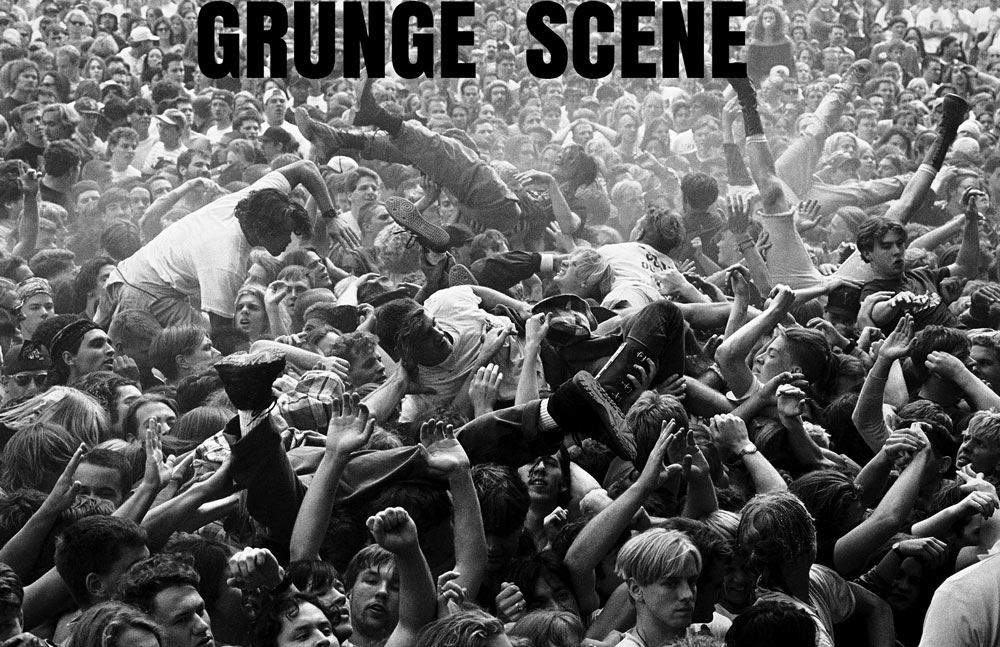
C.C.: And now, in the digital era, what kind of a camera is in your bag most of the time? Did switching to a digital camera changed your style?
C.P.: Mostly, my Leica M10, though I’ll use Nikon DSLR’s for certain types of ‘Heavy Lifting’ (i.e., longer lens work, etc.). The Leica digital rangefinders have made me more loose – I often don’t look through the viewfinder at all – which I think takes some of the edge off of that digital ‘Perfection’ that everyone seems to be seeking with more and sharper megapixels. I prefer to capitalize on ‘Informed Luck.’ In other words, I control some of the elements, but not all. A good example is the photo of the Stooges cover supergroup on the roof of the Pike Place Market. When Mike McCready started to jump (and he only did it once), I spotted it out of the corner of my eye and quickly swooped my Leica M9 with an 18mm wide lens down to my side, pointing up and – click. Even though I wasn’t looking through the viewfinder, I managed to not only capture Mike in midair but also all three of the other members, perfectly framed. Part luck, but primarily practice.

